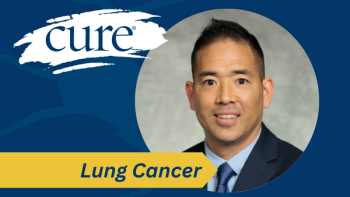
How Q-TWiST Can Guide Kidney Cancer Treatment Choices
Q-TWiST may help patients with advanced kidney cancer and their doctors weigh treatment options by focusing on quality of life, not just disease control.
The Quality-Adjusted Time without Symptoms or Toxicity (Q-TWiST) analysis — which measures the amount of time a patient lives without significant side effects or disease progression — may help guide treatment choices for patients with advanced kidney cancer when cure is no longer the goal.
In an interview with CURE during the
By the time patients reach third-line treatment, they have typically received both VEGF-targeted therapy and immunotherapy, and may be managing ongoing side effects along with cancer-related symptoms. At this stage, quality of life becomes a critical factor, not just traditional end points like progression-free survival or response.
Q-TWiST helps put these outcomes into context by estimating how much of a patient’s remaining time is spent without major side effects or disease progression. This can help patients and clinicians work together to better understand the potential benefit of a treatment, especially when the goal shifts from cure to disease control.
Powles is a professor of Genitourinary Oncology, lead for Solid Tumour Research, and director of the Barts Cancer Centre at St. Bartholomew's Hospital, in London, England. He is also the co-lead of both the Barts Experimental Cancer Medicine Centre and the NIHR Biomedical Research Centre.
Transcript
How might this study help patients and doctors make more informed decisions when choosing between treatment options?
I think doctors and clinicians need to work together to make important decisions for patients with heavily pretreated metastatic clear cell renal cancer. The reality is that very few of these patients are cured by the time they reach third-line therapy. Unfortunately, the best chance at cure is typically in the front-line setting or in the perioperative adjuvant space.
By the time a patient reaches third-line treatment, they’ve likely received both VEGF TKI and immunotherapy. They've experienced significant side effects from prior therapies and may also have cancer-related symptoms. So, at this point, treatment decisions shouldn't be based solely on efficacy; quality of life becomes a critical factor.
That’s where Q-TWiST analysis comes in. While the mathematical modeling is complex, the basic idea is simple: it measures the time a patient spends without significant toxicity or disease progression. This can be just as important as traditional end points like progression-free survival, especially when the goal is disease control rather than cure.
Ultimately, this kind of data supports shared decision-making between patients and their doctors. It helps clarify the real benefit of treatment, emphasizing that it’s not just about how long patients live, but how well they live, especially when a cure is no longer the goal.
Transcript has been edited for clarity and conciseness
For more news on cancer updates, research and education,





